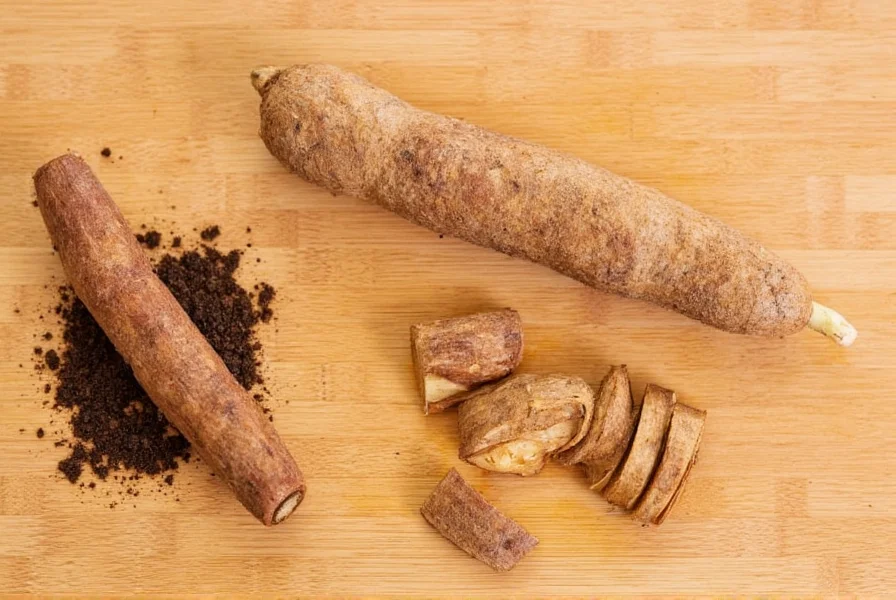Anise root, also known as sweet cicely or myrrh root, is a fragrant herb root with a distinctive licorice-like flavor used in traditional Middle Eastern, Mediterranean, and Asian cuisines. Unlike anise seeds or star anise, the root offers a more earthy, complex sweetness perfect for both savory stews and delicate desserts. When preparing anise root recipes, peel the tough outer layer first, then slice or grate the tender inner portion. Fresh anise root provides the most vibrant flavor, but dried root can be rehydrated for traditional preparations. This versatile ingredient shines in teas, broths, rice dishes, and baked goods, adding depth without overwhelming other flavors.
Anise root remains one of the most misunderstood aromatic ingredients in global cuisine. While many home cooks are familiar with anise seeds and star anise, the actual root of the anise plant (Pimpinella anisum) offers a completely different flavor profile and culinary application. This perennial herb's root contains concentrated essential oils that provide a subtle sweetness with earthy undertones, making it ideal for balancing rich meats and enhancing vegetable dishes.
Native to the eastern Mediterranean region, anise root has been used for centuries in traditional cooking and herbal medicine. In Turkish cuisine, it's called "anason kökü" and features prominently in lamb stews. Greek cooks incorporate it into fish broths, while Persian chefs use it to flavor rice dishes. Understanding how to properly select and prepare anise root transforms ordinary recipes into authentic culinary experiences.
Identifying and Selecting Quality Anise Root
When shopping for anise root, look for firm, unblemished roots with a pale beige color. Fresh roots should feel heavy for their size and emit a pleasant licorice aroma when scratched. Avoid roots with soft spots, mold, or excessive dryness. The best anise root appears in spring through early summer at specialty Middle Eastern markets or farmers' markets.

Traditional Anise Root Tea Preparation
One of the simplest ways to experience anise root's flavor is through tea, commonly consumed after meals in Mediterranean cultures for digestion.
| Ingredient | Measurement | Preparation Notes |
|---|---|---|
| Fresh anise root | 1-inch piece | Peel and thinly slice |
| Water | 2 cups | Filtered preferred |
| Honey | 1-2 tsp | To taste |
| Lemon slice | 1 | Optional garnish |
Instructions: Peel the anise root and slice thinly. Bring water to a gentle simmer (not boiling) and add the sliced root. Simmer covered for 15 minutes. Strain into cups and add honey to taste. This traditional anise root tea preparation creates a soothing beverage perfect after heavy meals.
Authentic Middle Eastern Anise Root Stew
This lamb and vegetable stew represents one of the most beloved anise root recipes across Turkey and Greece. The root's natural sweetness balances the richness of the meat while enhancing the vegetables' natural flavors.
Ingredients:
- 1 lb lamb shoulder, cubed
- 2-inch piece fresh anise root, peeled and grated
- 1 onion, finely chopped
- 2 carrots, sliced
- 1 parsnip, sliced
- 4 cups lamb or vegetable broth
- 2 tbsp olive oil
- Salt and pepper to taste
Method: Brown lamb in olive oil, then remove. Sauté onions until translucent, add grated anise root and cook for 2 minutes. Return lamb to pot with all vegetables and broth. Simmer covered for 1.5-2 hours until meat is tender. Season with salt and pepper. The anise root's flavor will mellow and integrate beautifully with the other ingredients during slow cooking.

Anise Root Flavor Pairings and Substitutes
Anise root works exceptionally well with:
- Lamb, chicken, and fatty fish
- Root vegetables like carrots, parsnips, and turnips
- Citrus fruits, particularly orange and lemon
- Other aromatic herbs like dill and mint
Substitution guide: If you cannot find fresh anise root, use 1 teaspoon anise seeds plus a pinch of fennel seeds for every inch of fresh root required. For dried anise root (available in some specialty stores), rehydrate 1 tablespoon dried root in 1/4 cup warm water for 20 minutes before using. Remember that star anise makes a poor substitute as it has a much stronger, more medicinal flavor.
Storage Tips for Maximum Freshness
Store fresh anise root wrapped in a slightly damp paper towel inside a perforated plastic bag in the refrigerator's crisper drawer. Properly stored, it will remain fresh for 2-3 weeks. For longer storage, peel and slice the root, then freeze in an airtight container for up to 6 months. Dried anise root maintains potency for 1-2 years when stored in an airtight container away from light and heat.
FAQs About Anise Root Recipes
What's the difference between anise root and star anise?
Anise root comes from the Pimpinella anisum plant's actual root and has a milder, earthier flavor. Star anise is the fruit of a completely different plant (Illicium verum) with a much stronger, more medicinal licorice flavor. They are not interchangeable in recipes requiring authentic anise root flavor.
Can I use anise seeds instead of anise root in recipes?
While not identical, you can substitute 1 teaspoon anise seeds plus a pinch of fennel seeds for every inch of fresh anise root. Remember that seeds have a more concentrated flavor, so start with less and adjust to taste. The texture and slow-release flavor of the actual root cannot be perfectly replicated.
How do I properly prepare fresh anise root for cooking?
First, scrub the root to remove soil. Peel the tough outer skin with a vegetable peeler. For stews and braises, slice thinly; for teas and infusions, grate the peeled root. Always add anise root early in the cooking process to allow its flavors to fully develop and integrate with other ingredients.
Are there any health considerations when using anise root?
Anise root is generally safe for culinary use. However, those with allergies to plants in the Apiaceae family (carrots, celery, parsley) should exercise caution. Pregnant women should consult their healthcare provider before consuming medicinal amounts, though culinary quantities in recipes pose no known risk.











 浙公网安备
33010002000092号
浙公网安备
33010002000092号 浙B2-20120091-4
浙B2-20120091-4